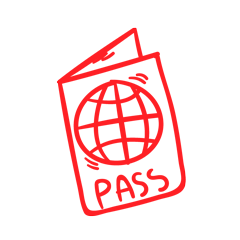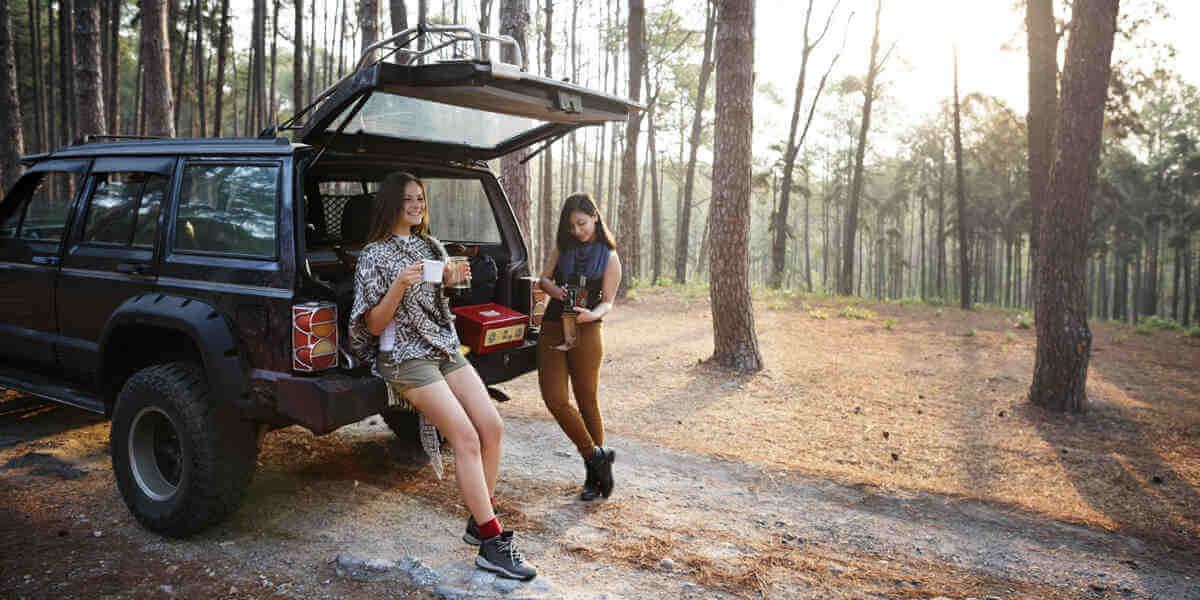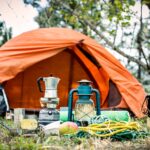Overlanding offers the unparalleled freedom of exploring remote landscapes while traveling self-sufficiently. Yet, before hitting the road, one of the most crucial aspects to consider is overlanding budget planning. Understanding the costs involved in overland travel is essential for ensuring your trip is safe, enjoyable, and financially manageable. From vehicle expenses to gear, food, and camping, careful planning can prevent unforeseen financial stress and help you make the most of your adventure.
- Understanding the Costs of Overlanding Trips
- Vehicle Costs and Maintenance
- Accommodation and Camping Expenses
- Food and Cooking Expenses
- Gear and Equipment Costs
- Fuel and Travel Expenses
- Budgeting Strategies for Overlanding
- Common Mistakes in Overlanding Budget Planning
- FAQs About Overlanding Budget Planning
- Conclusion & Call to Action
This comprehensive guide will break down the costs associated with overland travel, provide practical budgeting tips, and explore strategies to save money on your journey. Whether you are a seasoned traveler or a first-time overlander, this article will equip you with the tools to plan your finances efficiently.
Understanding the Costs of Overlanding Trips
The total cost of an overland trip varies widely depending on factors such as trip duration, destination, vehicle type, and travel style. By breaking down the major expense categories, you can develop a realistic budget tailored to your needs.
Primary cost categories include:
- Vehicle-related expenses: purchase, maintenance, fuel, and insurance.
- Accommodation: tents, rooftop tents, campgrounds, or lodges.
- Food and cooking: groceries, prepared meals, and portable cooking equipment.
- Gear and equipment: tents, sleeping bags, cooking gear, and navigation tools.
- Miscellaneous costs: permits, tolls, park fees, and emergency funds.
Careful consideration of these costs ensures you can travel confidently without financial surprises. Secondary keywords like cost of overland trips and overland travel expenses fit naturally here, emphasizing the financial planning aspect.
Vehicle Costs and Maintenance
A vehicle is the foundation of any overlanding trip. Choosing the right vehicle and maintaining it properly is crucial for both safety and budget management.
Choosing the Right Vehicle for Your Budget
Vehicle selection significantly impacts overall trip costs. Options range from compact SUVs to fully equipped 4×4 trucks:
- 4×4 Vehicles: Offer superior off-road capabilities but tend to be more expensive to purchase and maintain.
- SUVs: More affordable, efficient on fuel, and sufficient for moderate overlanding trips.
- Overland-Ready Vehicles: Pre-modified vehicles reduce the need for costly upgrades but often come at a premium.
Consider fuel efficiency, terrain compatibility, and load capacity when choosing your vehicle. An efficient vehicle reduces fuel expenses and maintenance issues during long trips.
Maintenance and Repairs
Routine maintenance and preparation for emergencies are critical:
- Regular Maintenance: Oil changes, brake checks, and tire inspections prevent costly breakdowns.
- Spare Parts: Carry essential spares like belts, filters, and tires for remote areas.
- Emergency Repairs: Learning basic mechanical skills can save both time and money.
Neglecting vehicle maintenance is one of the most common reasons overlanders encounter unexpected costs.
Insurance and Registration
Insurance coverage protects against financial loss:
- Vehicle Insurance: Ensure your policy covers off-road driving if you plan to traverse rough terrain.
- Comprehensive Coverage: Includes accident damage, theft, and natural hazards.
- Registration Costs: Vary by state or country; check for additional permits needed for cross-border trips.
Investing in appropriate insurance provides peace of mind and avoids potentially ruinous expenses.
Accommodation and Camping Expenses
Accommodation is a significant factor in overland travel budgets. Choosing between tents, rooftop tents, and campgrounds can influence both comfort and cost.
Rooftop Tents vs. Ground Tents
- Rooftop Tents (RTTs): Mounted on your vehicle, RTTs provide elevated safety, easy setup, and protection from wildlife. While the initial investment is higher, RTTs can reduce long-term accommodation costs. Internal link: Rooftop Tent Guide.
- Ground Tents: More affordable and versatile, suitable for solo travelers or family camping. Choose durable materials to withstand weather conditions.
Campgrounds and Wild Camping Costs
- Paid Campsites: National parks and private campgrounds may charge daily fees ranging from $10 to $50 per night.
- Free/Wild Camping: Many overlanders opt for free campsites in remote areas, but it requires research and adherence to local regulations.
Tips for Saving on Accommodation
- Travel off-season to avoid peak prices.
- Consider memberships for discounted camping fees.
- Mix wild camping with paid sites to reduce overall accommodation costs.
Food and Cooking Expenses
Food is another critical area where budgeting can significantly impact overall expenses. Preparing your own meals and investing in portable cooking equipment can save substantial amounts.
Preparing Your Own Meals
Cooking your own meals reduces reliance on restaurants and convenience stores:
- Meal Planning: Plan meals in advance to buy groceries efficiently.
- Bulk Purchasing: Buy staple items in bulk to minimize cost per meal.
- Storage: Utilize coolers or portable refrigeration to extend the shelf life of perishable items.
Overland Cooking Gear
Investing in quality cooking gear ensures efficiency and reliability:
- Portable stoves (propane, butane, multi-fuel)
- Lightweight cookware and multipurpose utensils
- Secondary keyword: overland cooking equipment
Budget-Friendly Food Tips
- Cook large meals to last multiple days.
- Use inexpensive, nutrient-rich ingredients.
- Avoid waste by repurposing leftovers creatively.
Gear and Equipment Costs
Overlanding requires specific gear to ensure safety, comfort, and convenience. Budgeting for gear is a crucial step in overlanding budget planning.
Essential Overlanding Gear
- Tents and Sleeping Systems: Rooftop tents, ground tents, sleeping bags, and sleeping pads. Secondary keywords: best overlanding tents, camping gear for overland trips.
- Recovery Equipment: Recovery straps, traction boards, and winches for safe off-road travel.
- Navigation Tools: GPS devices, maps, and compasses.
Budget vs. Premium Gear
- Invest in high-quality gear for items critical to safety and durability.
- Use budget alternatives for items with lower impact or lower frequency of use.
- Consider second-hand purchases or seasonal discounts to save money.
Packing and Storage Solutions
Efficient packing reduces risk of damage and optimizes vehicle space:
- Stackable storage boxes
- Compression sacks for sleeping bags and clothing
- Roof racks and secure mounting systems
Fuel and Travel Expenses
Fuel and travel-related expenses are often the largest recurring costs during overland trips.
Calculating Fuel Costs
- Estimate fuel consumption based on vehicle type, route, terrain, and trip duration.
- Account for remote areas with higher fuel prices.
Toll Roads, Permits, and Fees
- Include border crossing fees, national park permits, and road tolls.
- Research regional regulations to avoid unexpected charges.
Money-Saving Travel Tips
- Plan routes efficiently to minimize detours and extra mileage.
- Use fuel-efficient driving techniques, such as maintaining steady speed and avoiding unnecessary idling.
- Travel during off-peak seasons to reduce accommodation and fuel costs.
Budgeting Strategies for Overlanding
Effective budgeting strategies ensure financial control and reduce stress during your trip.
Setting a Realistic Trip Budget
- Create a detailed spreadsheet covering all potential costs.
- Include emergency funds for unexpected repairs or medical needs.
- Factor in currency fluctuations if traveling internationally.
Tracking Expenses on the Road
- Use mobile apps or notebooks to log daily spending.
- Categorize expenses to identify areas where savings are possible.
Tips to Save Money While Overlanding
- Secondary keywords: cheap overlanding tips, save money on overlanding.
- Mix wild camping with paid sites to reduce accommodation costs.
- Buy groceries locally and avoid frequent restaurant meals.
- Share costs with travel companions when possible.
Common Mistakes in Overlanding Budget Planning
Many overlanders underestimate costs or overlook critical expenses. Avoid these pitfalls:
- Ignoring fuel consumption variability.
- Underestimating gear or equipment needs.
- Failing to account for emergency or medical expenses.
- Overlooking seasonal or location-based price variations.
Careful planning and contingency budgeting can prevent these mistakes and ensure a smooth trip.
FAQs About Overlanding Budget Planning
1. How much does a typical overland trip cost?
Costs vary widely, but a moderate overland trip can range from $50 to $200 per day, depending on vehicle, gear, and travel style.
2. What is the cheapest way to overland?
Utilize wild camping, cook your own meals, and select fuel-efficient routes and vehicles.
3. How do I budget for long overland trips?
Estimate all major expense categories, include an emergency fund, and track expenses daily to stay within budget.
4. Can I overland on a tight budget?
Yes. Focus on essential gear, plan meals and fuel efficiently, and combine wild camping with selective paid accommodations.
5. Are rooftop tents worth the investment?
While initially expensive, rooftop tents offer convenience, safety, and long-term savings by reducing the need for paid accommodations. Internal link: Rooftop Tent Guide.
Conclusion & Call to Action
Effective overlanding budget planning is essential for a safe, enjoyable, and stress-free adventure. By understanding the costs of vehicles, accommodation, food, gear, and travel, you can create a realistic budget that allows flexibility for emergencies. Implementing money-saving strategies ensures you maximize your experience without compromising comfort or safety.
Invest in durable gear, plan your meals and routes efficiently, and track all expenses to avoid surprises. For detailed guidance on rooftop tents, visit: Overlanding Rooftop Tents: Best Options, Pros & Cons Explained.
Start planning your overland adventure today with confidence, knowing your budget is well-prepared, and your journey will be safe, enjoyable, and unforgettable.








